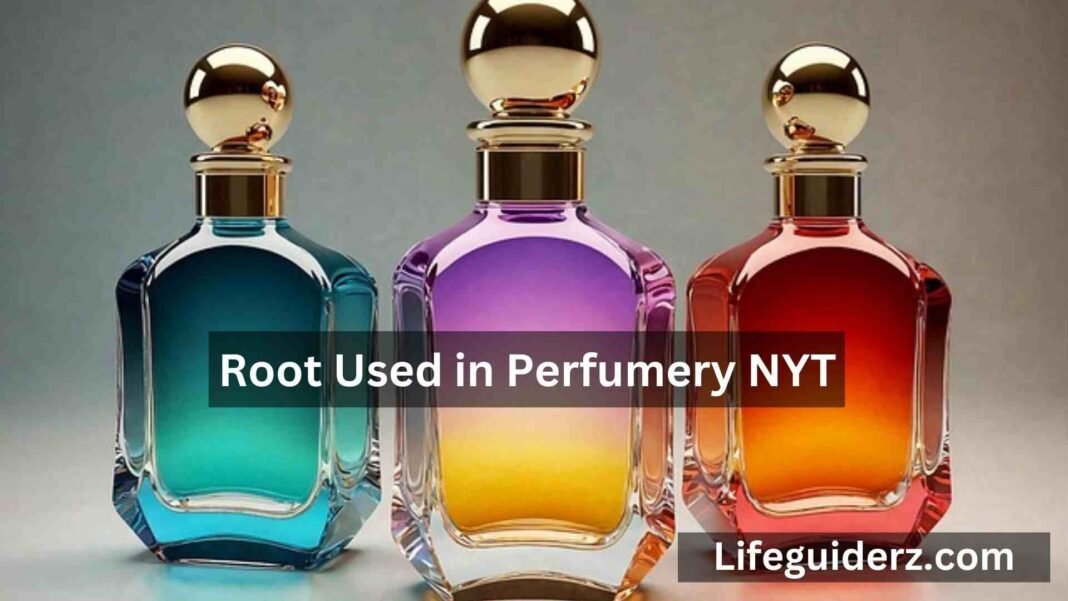Introduction: Generally in the aspect of fragrances it is and interesting discovery that all factors have their function in constructing the special kind of scent. Of all these elements some roots retain a different position due to their special characteristic of aroma. In this article we discuss the root mentioned in the New York Times as used in perfumery and look into its role in the field of perfumery.
The Mystery Behind the Root Used in Perfumery NYT
A little while back in late 2018, the New York times unveiled a particular origin most people did not know about in perfumery. The Cinnamon offers a warm, earthy, and rich woody aroma and highlights many famous perfumes. However, what exactly is this root and why is this element so central to perfumery?
What kind of Root is used in Perfumes NYT? Investigates
Regarding the given root the name of this root used in perfumery nyt. It is a tall grass indigenous to India and its root contains oil which gives out an earthy and woody fragrance. Perfumeries have always used this root for centuries because it has a moistening, non-aromatic base note with very good lasting power. The New York Times also demonstrates that vetiver remains one of the most sought-after raw materials in modern perfumery because, despite its significance, it is much more multi-faceted.
The Aromatic Journey: Learns About the Root Used in Perfumery NYT
Actually vetiver oil extracted from the root goes through a very time-consuming process of extraction. First, water flushes the roots, then they dry, and finally, steam distillation extracts the oil. Formulators use this oil in fragrances for its warm, caramel-like, sweetish aroma that complements floral and citrus notes. While building its narrative, the NYT goes deeper to explain how this root used in perfumery nyt has provided the foundation for many Great Scent throughout the years.
Learning More About The Most Absolute Pasture – NYT Guide
According to the New York Times, there is a need to envision vetiver which major strength in perfumery is that it only works as base notes. Note that base notes are essential apparels of any fragrance as they give a scent its body and staying power. It is because of this versatility that vetiver is usually classified as a base note fragrance that can either be male or female. Its aroma constitutes a warm, woody, slightly bitter scent with background notes of amber and leather.
NYT Explores the Root Used in Perfumery NYT
It is important to understand why people regard vetiver as a secret weapon in the fragrance industry. The answer lies in how it blends into other formulations while simultaneously enriching the overall composition. Many perfumers cited in the New York Times chose vetiver as their ingredient of choice, claiming that it gives their otherwise synthetic fragrances a ‘natural’ earthy element. Its mild aroma allows it to combine easily with almost any type of fragrance, from fresh floral to spicy varieties.
Report from New York Times: Why This Root is Necessary in Perfumery
The NYT report notes that people favor the plant not only for its fragrance but also for its harvesting method. One of vetiver’s major characteristics is the fact that this material is renewable, so people cultivate it in different countries such as India, Haiti, and Indonesia. This root covers their local economies and also protecting the environment when it comes to the used of the fragrance. It grows widely in different territories without needing many resources and perfumers have dubbed it an environmentally-friendly crop.
The Unique Root Used in Perfumery: Why the NYT Explains
As for vetiver, it not only has its specific fragrance but also provides the stability essential to the fragrance. The oil extracted from the root also possesses very good fixative and this conveys the virtue of making the perfume long lasting on the skin of the wearer. The New York Times says that because of this property vetiver becomes a crucial ingredient in the production of aromatic compounds since it contributes to the creation of long-lasting fragrances with high lasting power.
The New York Times Explains the Importance of the Root Used in Perfumes
They go further, in their NYT, exposing how vetiver is significant in classic and modern perfumery. This article looks at the versatility that vetiver holds from the early French elegant perfumes to the contemporary tiny niche fragrances. For this reason, it forms a major pillar in the composition of perfumes as it offers the depth and balance while at the same time enriching the perfume.
Discovering the History of the Root Used in Perfumery: New York Times Analysis
Looking at the past few centuries, vetiver is not a new name in the field of perfumery. The root SND, which originates from India, primarily served traditional medicine and ceremonies. Over time, people also realized its distinct aroma and began using it as a flavoring agent. The New York Times follows the above journey though the change in status of the vetiver plant through the following description.
NYT Perspective: How the Root Used in Perfumery is Changing the Fragrance Industry
Vetiver up also up its influence to the fragrance industry is even more than before. Note that as consumers increasingly demand natural and environment-friendly products, the popularity of vetiver grass has risen due to its renewability in cultivation. The New York Times highlights this root as an example of how the industry is transforming to become more ethical while still producing quality work.
Article Excerpt from NYT that talks about How the Root Used in Perfumery Has Become Popular
That is, vetiver does not necessarily confine itself to high-end perfumes, and its popularity is growing. Since people are now more conscious as to what they put on their bodies, products derived from vetiver essential oils are slowly finding their way into the mainstream market. The described NYT report also illustrates how even mainstream brands are introducing this root into their collections, thus making the scent of this root widely popular.
The Role of This Root in Perfumery: New York Times finds
From the New York times, the reader can get to know more information about the influence of vetiver on the present and future of the perfumery industry. To perfumers, this root does not only provides an aroma, but also a functionality to amplify and fix other components. People more often refer to its role as a fixative, meaning it guarantees a certain balance in the composition.
New York Times Investigates the Origin of a Root used in Perfumery and its Universal Appeal
It is not just the smell of Vetiver that became popular throughout the world. People associated cultural properties to the root, especially in India and Haiti, which increase their desirability. The NYT explains how this cultural link proved to be beneficial in maintaining the popularity of the root in perfumery now days, thus emphasizing on the interconnection between tradition and contemporaneity.
From Why Perfumers Rely on This Root: NYT’s Definitive Guide to Perfumery
Reading through the different sections of the detailed article that featured in the NYT, one can establish why perfumers keep on coming back to vetiver. It has a multifaceted odor, the use of which is environmentally friendly, and also has the ability to act as a fixative makes it popular with artistic or actual perfumery. Be it to form the major base or to provide that undertone, the use of vetiver makes it canine that it will forever be a part of it.
Conclusions
Thus, to specify the root used in perfumery, about which New York Times has reported, is no other than vetiver. This earthy, woody and composite root has indeed emerged as the crucial constituent in the global perfumery. Since the origins of the practice to the present times, perfumers and fragrance experts have continued to see vetiver retain its charm and attract their interest. To conclude, as emphasized by the NYT, no one can doubt the importance of this root in perfumery, that renders it as an essential subject in the craft and in science.
FAQs:
Still have questions? Feel free to reach out to us, and we’ll be happy to assist you.
Q1. What is the meaning of “One End of a Battery NYT”?
Crossword puzzles of The New York Times (NYT) usually associate the expression “one end of a battery” with either of the two terminals, positive (+) or negative (-). The answers would possibly include “ANODE” or “CATHODE” depending on the specific clue that has been provided as well as the general situation of the puzzle.
Q2. Who is this ‘Stillmatic’ rapper referred in the NYT?
The New York Times mentioned the rapper Nas in association with the record “Stillmatic. “Masters at Work” is Nas’ 2001 now tune that consolidated his arrival in hip-hop for one more term.
Q3. What Shapes are Considered to be Good Starting Pieces by NYT?
To the crossword lovers, New York Times advise them to begin with the puzzle with what they call “the corners of the edges”. Often they are simply used to erect a structure which makes it easier to solve the rest of the problem.
Q4. Who Is the Writer Tolstoy the Article in NYT?
The writer that the New York Times is talking about is Leo Tolstoy, a Russian writer of 19th century and the author of War and Peace, Anna Karenina and many other timeless works. It is generally accepted that he is one of the most remarkable novelists in the literature history.
Q5. If looking for rejuvenating rinse, employing specialized “Speak” may mean going to NYT Crosswords for answer.
In NYT crosswords, the term refers to ‘specialized ‘speak’ means that it refers to jargon that is used in different professions or areas of life. That means that if asked to provide the meaning of CALL necessity and GET usage, typical answers are words such as “ARGOT ” or “LINGO”.
Q6. What NYT Crosswords May Make You Cry For?
Apparently, the top clue in a New York Times crossword puzzle that says “This Might Bring You to Tears” has an answer that is often ONION because of the trick onions play every time they are cut.
Q7. What is a Soft Substance Described in an NYT Article?
An example for a clue such as a “powdery material” in the New York Times crossword puzzles could be TALC or SILT both of which are fine powdery materials.
Q8. What does it mean if you have a powdery mineral in the NYT Mini Puzzle?
A clue followed by: ‘powdery mineral’ appears in the NYT Mini puzzle is solved almost every time with TALC as it is a soft white clay that is used in baby powder, etc.

